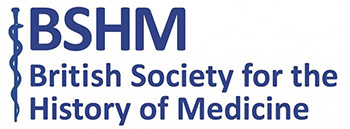Soon after its opening in 1896, the general committee of the Royal Lancaster Infirmary (RLI) discovered that they needed an additional £4200 for essential items. Bryan Rhodes describes an object used to raise funds.
Building work on the new Lancaster Infirmary began in 1893, and by 1896 this ‘state of the art’ new hospital was ready to be opened. The Duke and Duchess of York arrived in Lancaster for the official opening of the hospital in March 1896. The Duke, later crowned George V, opened the hospital using a golden key presented by the architects, Paley and Austin, on Tuesday 24 March, and announced that from that moment onwards, the infirmary would become the ‘Royal Lancaster Infirmary’, courtesy of his grandmother, Queen Victoria.
Despite various fundraising events and multiple donations at the opening ceremony, the general committee needed to raise the additional funds, and this collecting barrel was probably one method to do so.
Object of the month
The barrel is the first in the series of ‘Object of the Month’ on the new website of the Lancaster Health and Medical Museum Collection and is one of the museums’ most recent donations, received in October 2024 from Mrs J. Parker
Mrs. Parker discovered the collecting barrel, measuring 22.5 cm long (just under 9 inches), in the cellar of her late father’s house. Her father, Kenneth Townson, had moved to Lancaster in 1961 to work in the Bay View Hospital (the last name for the Lancaster workhouse hospital). By coincidence, I had arranged to meet her to collect the barrel in the Bay View Garden Centre café.
When the Bay View Hospital closed in 1962, Mr. Townson moved to the RLI where he worked until 1984 as the manager of the general office, close to the main entrance. We don’t know how the barrel came to be in his possession, but we are grateful to Mrs. Parker both for photos of her father and the barrel.
Collecting barrels of this design were quite common in the late 1800s. Our example is beautifully coopered with narrow wooden staves and four brass hoops. At one end there is a small wooden door with a lock. The key for the lock is missing.
After collecting the barrel, I discovered that Mrs. Parker’s husband also has a connection to Lancaster’s medical history. He is a direct descendant of Agnes Oxley, who worked as one of two cleaners for the notorious Dr Buck Ruxton in September 1935. She was scheduled to clean his house and surgery the day after he murdered his common law wife and the housemaid and was surprised to have a very early visit from the doctor asking her not to come that day!
Bryan Rhodes is the chair of the Lancaster Health and Medical Museum Collection and guest editor of the 5th edition of Topics in the History of Medicine, to be published later this year by the British Society for the History of Medicine. He is a retired orthopaedic surgeon.
Further Reading: ‘In Times of Need, The History of the Royal Lancaster Infirmary’ by J.G. Blacktop


